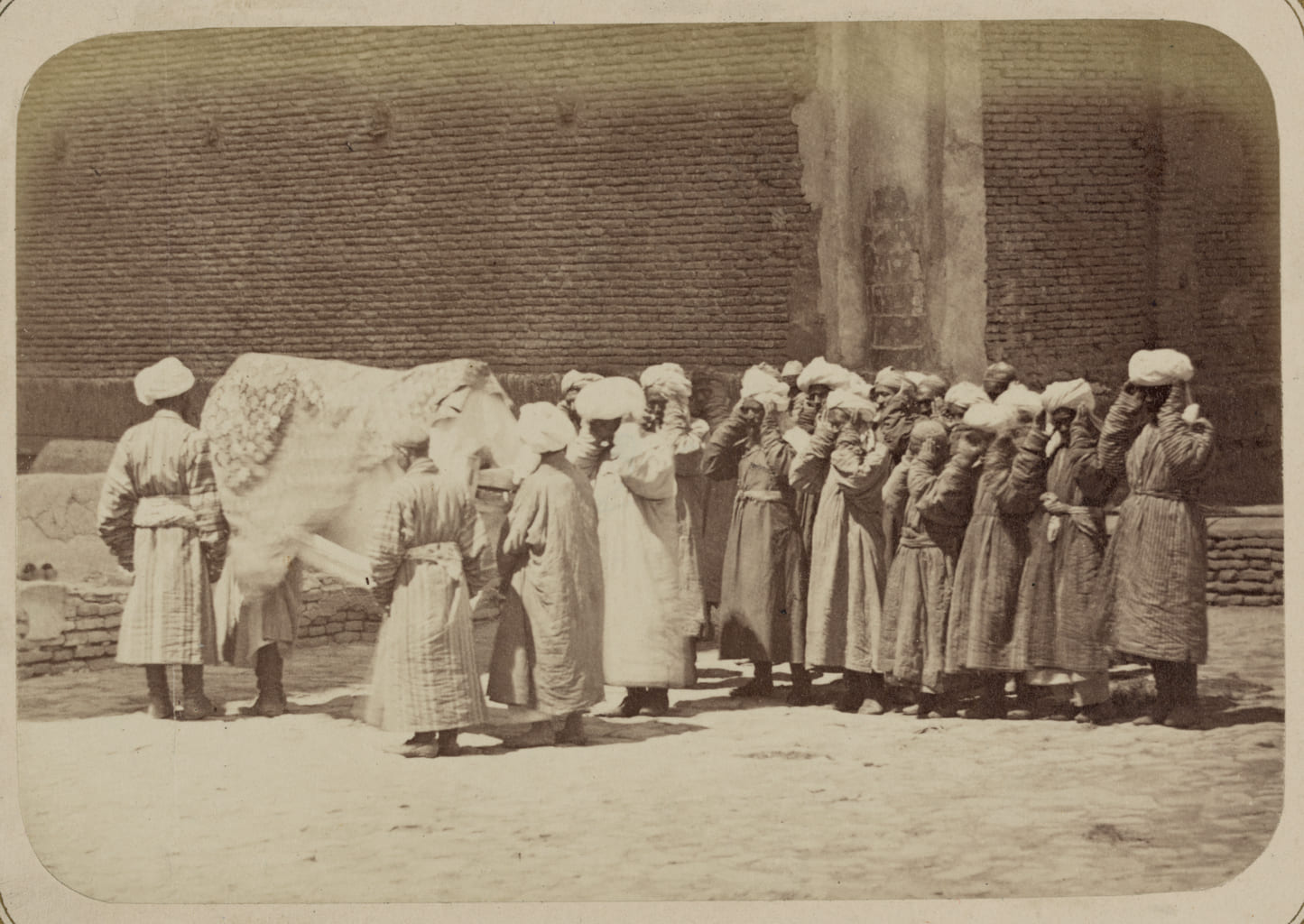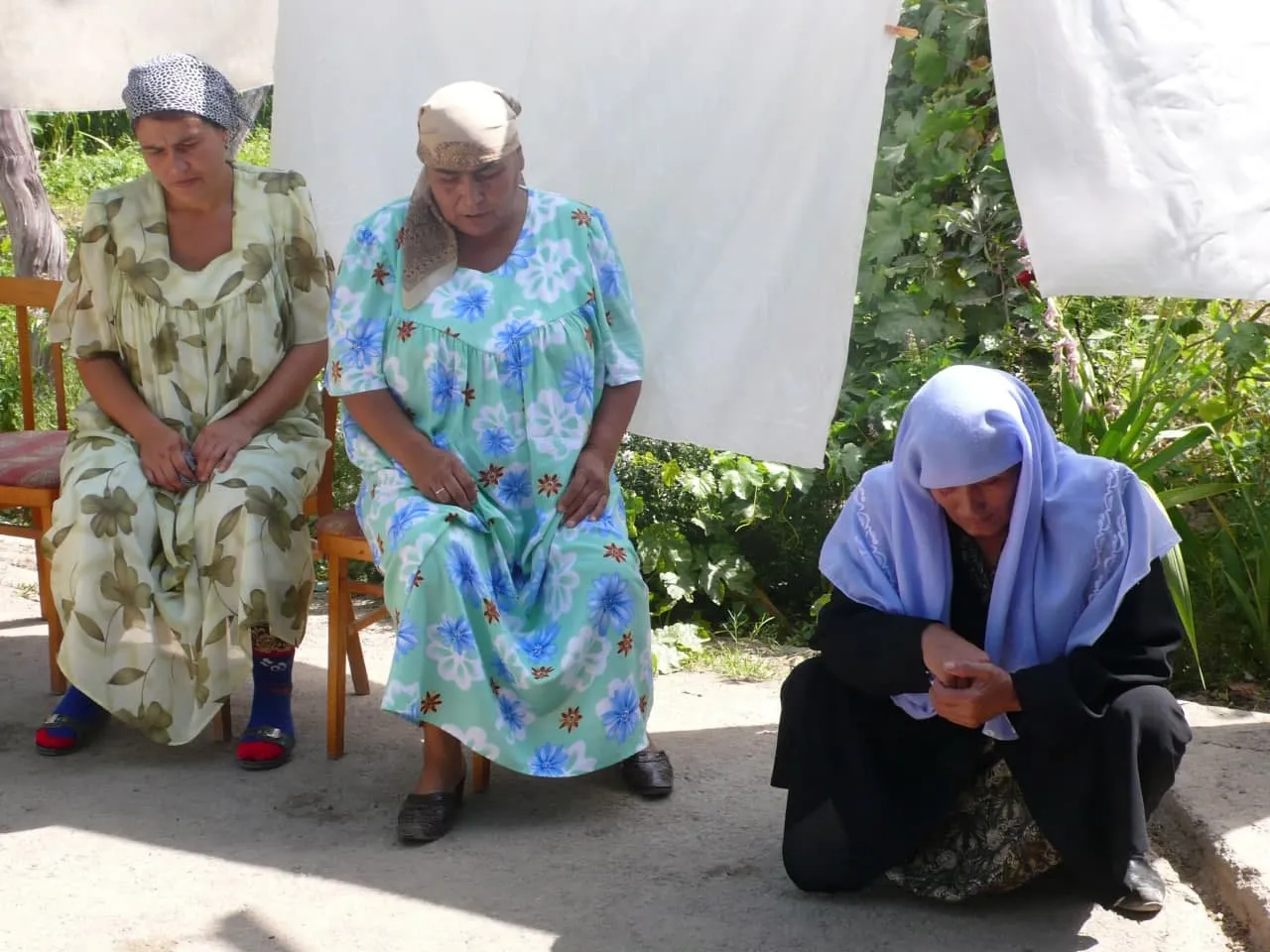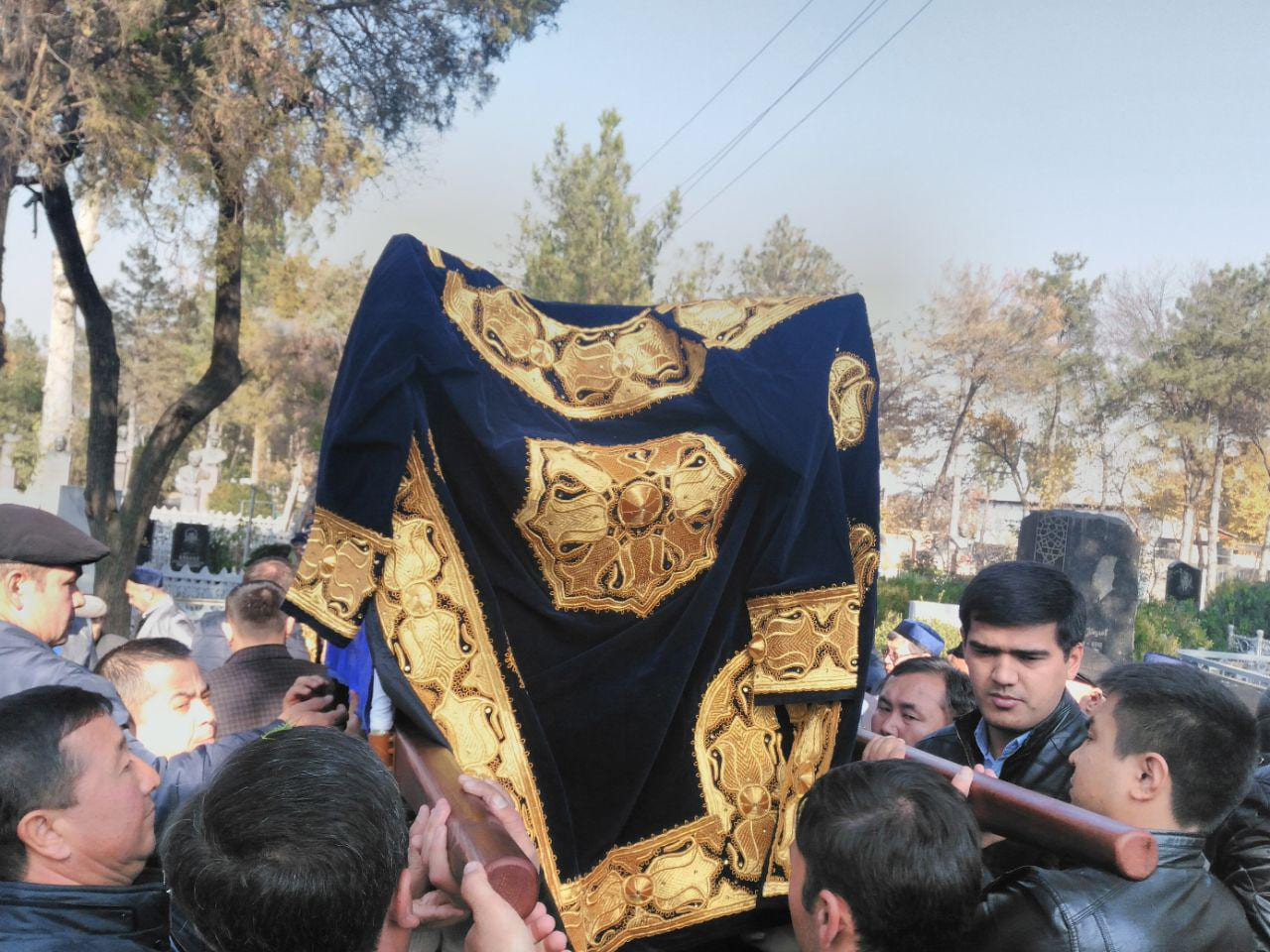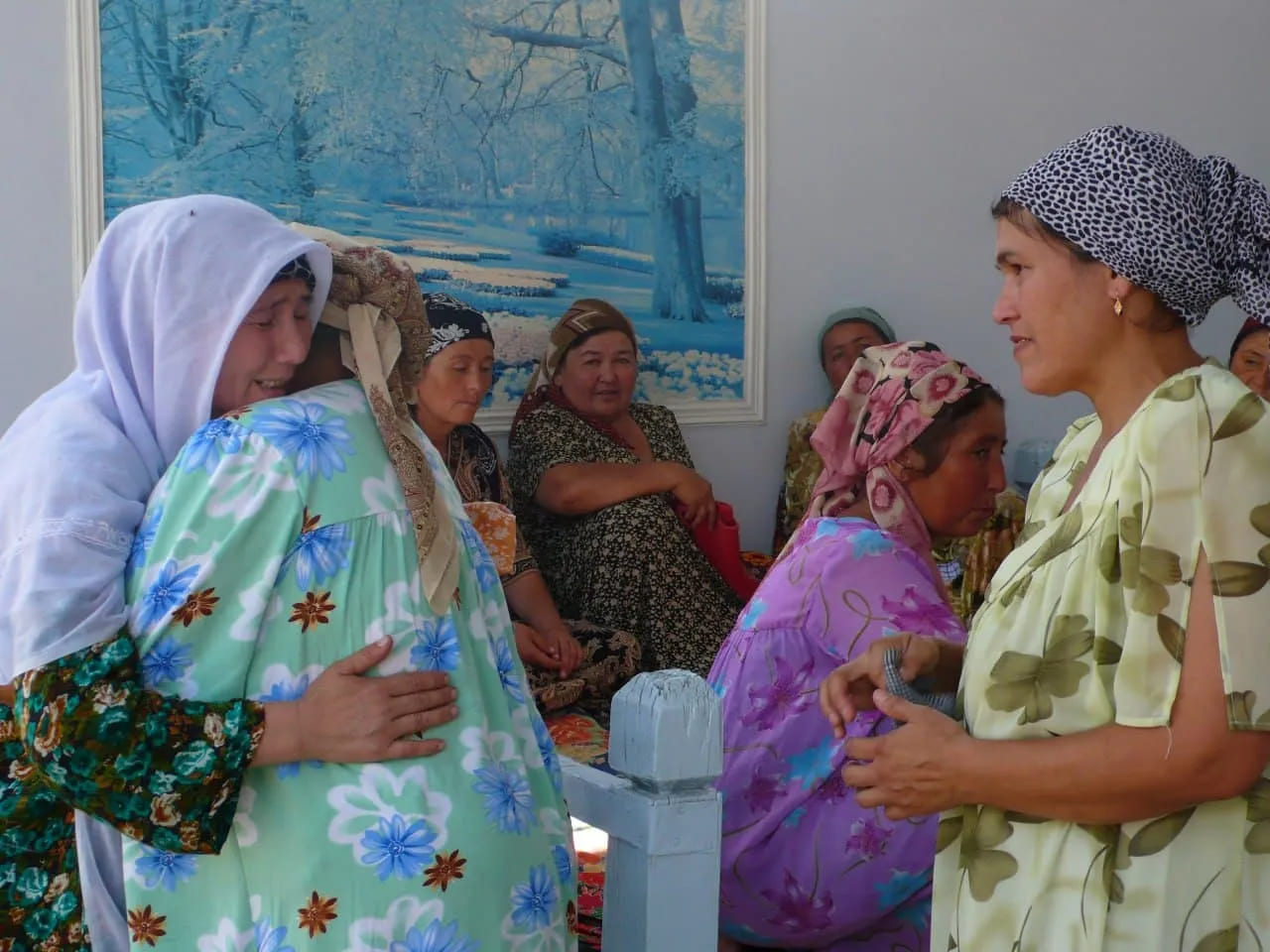


Leave your contact details and we will contact you

The cycles of traditional funeral ceremonies are very conservative and are preserved in present days. These traditions are most closely associated with religious beliefs (Islam, pre-Islamic beliefs).
A person should be buried before sunset.
Neighbors from the makhallya clean the courtyard, open the gates, and place benches near the gate.
Before the funeral, there is a ritual of bathing the body. Before washing, a savan made from white cloth is prepared. If it is a girl or a young man who is to be married soon, they are dressed in the clothes of a bride or groom. While the body is being washed, prayers are read. The gifts (sarpo) should be made for those who took part in the bathing ritual. After these rituals, the body is placed on a stretcher and covered with a blanket. During the washing ceremony, crying in the house stops, as it is believed that the deceased cannot be disturbed at this time.
The crying of those bidding their final farewell resumes when the stretcher with the body is carried out, and all cries cease when mullah reads the prayer. Immediately after reading the janaza, the stretcher is picked up by relatives and quickly carried to the cemetery.
At cemeteries, fences are painted annually, new trees and flowers are planted, and old trees are whitewashed. One of the displays of attitude toward the memory of the late is the installation of a tombstone with the name of the deceased. According to Muslim custom, only men are allowed to take part in burial rites, so the sons or brothers of the deceased put the body into the grave, while women stay at home and cry over the deceased. After the burial, men count 7 steps, sit down, and the mullah reads ayats from the Quran.
There are 2 types of graves. The first one represents a rectangular space (gur-khona) with a depth of human growth, in which a recess with a length of 2 meters is cut through from the eastern side. The dead person is placed in this recess. The height of the recess should be such that the deceased can sit down during the interrogation of angels. When the body is put into the recess, it should be closed.
The second type of grave differs from the first one by the presence of a corridor with a hole, usually round in shape, that is laid between the gur-khona and the recess. The recess is also dug from the eastern side. The hole should be such that one person can drag the deceased through it. The hole is also closed after the body is placed in the recess.
While men are busy with the funeral of the deceased, women are preparing memorial food (halvaytar) in the house. After the men return, ayats from the Quran are read in the house, and gathered people are treated with prepared food.
Women can visit the grave in the following days, early in the morning. Back in the 1920s and 30s, it was forbidden for women to go to the cemetery. However, this ban disappeared in 1960. And even earlier in the 19th century, not only women but also men did not attend burials, since, according to the Muslim norm, the faster the grave could melt to the ground the better, while the crying over one’s beloved disturbs the soul of the deceased.

Rituals associated with memorial rites can be divided into two types: intra-family and public. Intra-family rites were held mainly among the family. On the day of the funeral, a special fabric –a symbol of mourning– is tied around the waists of close relatives. Mourning used to be observed for a long time, sometimes up to 3-5 years. Now the closest relatives observe it for up to one year, and all the memorial rites are mainly performed during this period. Those who mourn should not go out much until the end of the mourning period; visit families that are also in mourning or visit crowded places. In recent years, these prohibitions have been applied only to people closest to the deceased, and they more often involve the elderly. Young people may derogate from these norms since they need to go to work and be part of a team at a workplace. Such prohibitions as planting new trees, greenery, and forging firewood, as well as going outside or washing one’s head within 40 days have completely disappeared. Other prohibitions such as wearing dark dresses until the end of mourning, visiting the grave, and other bans have also become a thing of the past. Family rites include funeral feasts every Thursday and Sunday. On these days, plov is prepared. After the meal, only the dastarkhon remains, and one of the older family members reads the Quran, dedicating his reading to the spirit of the deceased. Previously, each Thursday until 40 days passed, after the preparation of plov, aksakals were invited to the feast. Today, this ceremony is not performed in a number of families.
According to people’s beliefs, spirits attend memorial ceremonies. In this regard, there is another rite performed by the family. Every Thursday, members of the family light a candle and place a piala with clean water near it; afterward, on top of the piala, a twig of a fruit tree is placed. There is an opinion that spirits take the appearance of a butterfly and visit their home, and the lit candle helps them find the way. Spirits drink water from the piala when sitting on a twig, which makes it more convenient for them. The candle burns until it goes out; if it burns to the end, then the next day the family puts in a new one, while the water in the piala needs to be changed every evening. After 40 days, rice is put in the bowl and given to the mullah, who reads the prayer. One of the rites is related to the end of mourning after the death anniversary, and it is called “ok kiyish” (to dress in white), in which only women participate. This rite is not an intra-family one since neighbors from the makhallya are invited to it. Public rites include: “uchi” - the third day since death, “ulgan kun” - the eighth day, “yigirma” - the twentieth day, “kirki” - the fortieth day, “yili” - the anniversary, as well as two Hayits that are celebrated within a year from the day of death of a person. On all public memorial days, it was necessary to make a sacrifice, but now Uzbek people do it three times: on the day of death, on the fortieth day, and on Kurban Hayit.Until the anniversary of the death of a person, two religious holidays “Ruza Hayit” and “Kurban Hayit” are widely celebrated by people, which can also be memorial days.


The last public ceremony in the funeral and memorial cycle is the anniversary, which is also celebrated lavishly and with many people involved. In the future, each family decides individually whether to repeat some rites or not, but those that are held before the anniversary are mandatory.
There are ceremonies of the funeral and memorial cycle, attended only by women; they are seasonal (autumn, spring, summer) and date back to pre-Islamic beliefs.
Despite conservatism, funeral ceremonies are undergoing changes. With the changes in the socio-economic situation of the population, many rites are performed at a lower cost in comparison with recent past days. On the other hand, not only is the revival of many elements of religion in the funeral and memorial cycle taking place. But also, with the advent of the opportunity to conduct religious rites more strictly, there is also a growing interest in them, not only on the part of the older generation but also on the part of young people.
Enter your e-mail address to keep abreast of the latest publications
